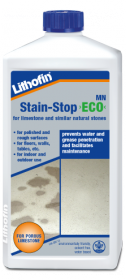Our most recent ‘Which Way is Green?’ dilemma has thrown up a frustrating lack of choice in the UK when it comes to ‘healthy’ building products. Having set our hearts on a gorgeous Botticino honed marble which we sourced ourselves instead of using an ‘off the shelf’ Baufritz flooring, we also needed to source a suitable adhesive, grout and sealant. The house is designed to be virtually airtight, with MVHR ventilation, so Baufritz advised us to avoid products with solvents.
Our extensive online searches for ‘healthy’, ‘solvent free’ or ‘toxin free’ building products available in the UK showed the sparsity of choice compared to the USA, Canada and Germany. US sites such as Building For Health and Green Building Supply appear to be more forward-thinking about the elimination of toxicity in buildings and offer a range of healthy building products such as AFM SafeCoat , disappointingly not available in the UK unless specially shipped.
The nasties we sought to avoid are VOCs (volatile organic compounds). The most dangerous type of VOC, aromatic hydrocarbon compounds, is commonly found in typical construction products and reacts with chlorine in the air to create smog and other compounds which damage the ozone layer. Equally worrying is the danger they present to the individual by assaulting and over time breaking down the immune system (source: www.zerovocbuildingproducts.com). However, on further reading it seems that not all VOCs are harmful per se and even ‘zero VOC’ products may not be entirely toxin free. Without a chemistry degree to discern the difference, we were fast becoming unstuck at the idea of finding truly ‘green’ glue, grout and sealant products.
The lack of UK choice and knowledge we encountered, combined with a deadline to get hold of the materials, meant a compromise was needed. We decided to use Joe’s suggestion of regular products by BAL for adhesive and grout and instead make sure the sealant (i.e. uppermost surface of the floor) was as healthy as possible with low toxicity. The product we’re planning to use is Lithofin MN Stain Stop ECO , a water based impregnator which will protect the marble flooring against stains but won’t change its matt honed appearance.
On a broader note, our quest to find low toxin building materials illustrated that for today’s UK eco house builder, the emphasis is firmly on energy performance and sustainable materials rather than indoor air quality and creating a healthy living environment. The UK’s Green Building Store provides excellent information on how to build low energy homes but doesn’t mentioning toxin-free materials. Their helpful YouTube video about the German Passivhaus methodology emphasises its benefits as being ‘comfortable, cheap and saving the planet’ but doesn’t specifically talk about the health benefits of living in such a house. Shouldn’t we all be thinking about protecting ourselves from pollution in our buildings as well as protecting the environment?
An explanation of ‘what is a healthy home?’ is offered by interior designer and sustainability specialist Elina Grigoriou who defines Wellbeing in the built environment as being ‘the performance of spaces that do not reduce the occupants’ emotional, mental and physical health.’ Elina defines indoor air quality as one of five elements in a holistic approach to wellbeing in buildings. The other four areas are acoustics, design character, physical arrangement and furniture, and light. Thankfully we’ve got those pretty much sewn up! Sky House Sussex will not only be an amazingly energy efficient house, thoughtfully designed with an abundance of light and space to aid relaxation. It will be also be a place where our Bed & Breakfast guests can experience a low carbon and healthy environment whilst knowing we’ve actively minimized the toxicity of the building and cleaning materials we use.


